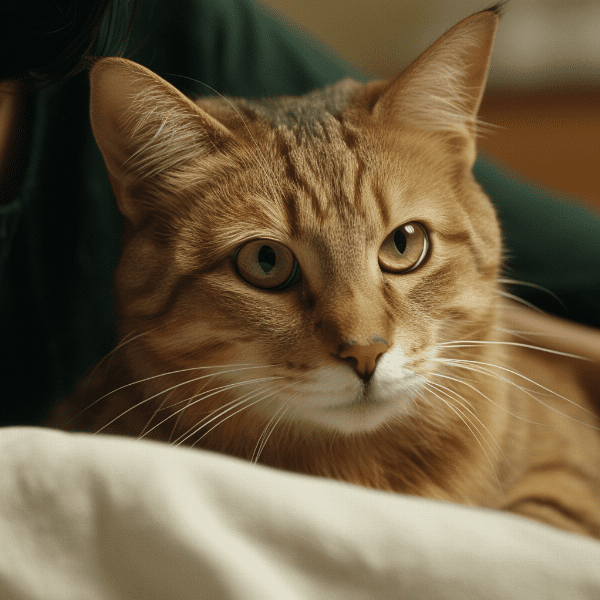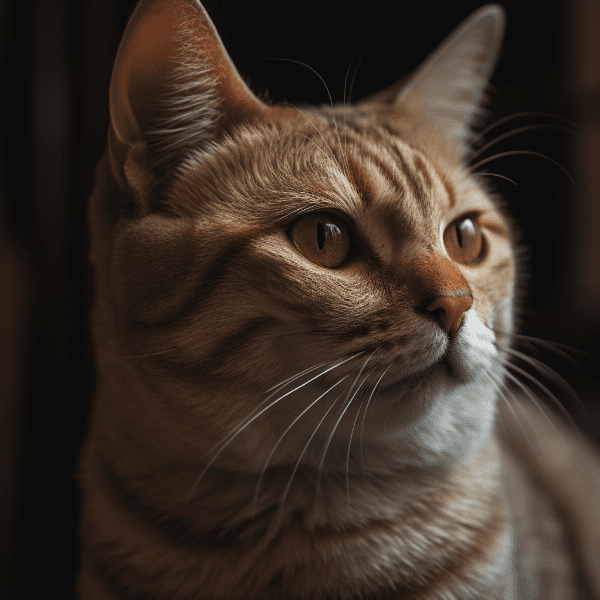Table of Contents
- Understanding Feline Infectious Peritonitis (FIP)
- Neurological Manifestations of FIP
- Causes of Neurological FIP
- Diagnosis of Neurological FIP
- Treatment Options for Neurological FIP
- Supportive Care for Cats with Neurological FIP
- Prognosis and Long-term Management of Neurological FIP
- Prevention of Neurological FIP
- Research and Future Directions for Neurological FIP
- Resources and Support for Owners of Cats with Neurological FIP
Understanding Feline Infectious Peritonitis (FIP)
Feline Infectious Peritonitis (FIP) is a viral disease that affects cats, caused by a mutated strain of the feline coronavirus. FIP is a serious and often fatal disease that can affect cats of all ages, but is most commonly found in young cats under the age of two.
Symptoms of FIP
FIP can present in two forms: wet and dry. Wet FIP is characterized by the accumulation of fluid in the chest or abdomen, while dry FIP presents with neurological symptoms such as loss of balance and coordination, seizures, and paralysis. Other common symptoms of FIP include fever, lethargy, loss of appetite, weight loss, and jaundice.
Diagnosis of FIP
Diagnosing FIP can be challenging as there is no single definitive test for the disease. A combination of diagnostic tests, including blood work, imaging, and analysis of fluid samples, is often necessary to make an accurate diagnosis. Veterinarians may also consider the cat’s clinical signs, history, and exposure risk when making a diagnosis.
Prevention of FIP
Preventing the spread of the feline coronavirus is the most effective way to prevent FIP. This can be done by practicing good hygiene and sanitation, such as regularly cleaning litter boxes and disinfecting surfaces that come into contact with infected bodily fluids. Vaccines are available for the feline coronavirus, but they are not always effective and may not be recommended in all cases.
In summary, Feline Infectious Peritonitis is a serious and often fatal disease that can affect cats of all ages. While there is currently no cure for the disease, early diagnosis and supportive treatment can help improve the cat’s quality of life. Practicing good hygiene and sanitation and reducing exposure to the feline coronavirus are the best ways to prevent the disease from spreading.

Neurological Manifestations of FIP
Feline Infectious Peritonitis (FIP) can have both wet and dry forms, but the dry form is often associated with neurological symptoms. These symptoms occur when the virus infects the central nervous system, leading to inflammation and damage to the brain and spinal cord.
Types of Neurological FIP
There are several types of Neurological fip, each with its own set of symptoms and prognoses. The most common types include:
- Meningoencephalitis: inflammation of the brain and meninges (the protective covering of the brain and spinal cord)
- Polyradiculoneuritis: inflammation of the nerve roots and spinal cord
- Vestibular syndrome: loss of balance and coordination due to damage to the inner ear
- Myelitis: inflammation of the spinal cord
Symptoms of Neurological FIP
Neurological FIP can present with a wide range of symptoms, including:
- Loss of balance and coordination
- Seizures
- Head pressing
- Paralysis
- Blindness
- Behavioral changes
- Tremors or shaking
- Abnormal gait or posture
- Vocalization
The symptoms can be gradual or sudden in onset and may progress over time.
Treatment of Neurological FIP
Unfortunately, there is no cure for neurological FIP, and treatment is largely supportive. Treatment options may include medications to manage symptoms, such as anti-seizure drugs or corticosteroids, as well as nutritional support and fluid therapy. In some cases, veterinarians may recommend more aggressive treatments such as immunosuppressive drugs, although these treatments are not always effective.
Prognosis for Neurological FIP
In summary, neurological FIP is a serious and often fatal form of FIP that can lead to a range of neurological symptoms. Diagnosis can be challenging, and treatment options are largely supportive. The prognosis for cats with neurological FIP is generally poor, and early intervention is critical for managing the cat’s symptoms and improving their quality of life.

Causes of Neurological FIP
Feline Infectious Peritonitis (FIP) is caused by a mutated strain of the feline coronavirus. While all forms of FIP are caused by the same virus, neurological FIP is associated with specific mutations that allow the virus to infect the central nervous system.
Viral Mutations and Neurological FIP
The exact mutations that lead to neurological FIP are not fully understood, but it is believed that certain changes in the virus’s genetic material allow it to replicate in the brain and spinal cord. These mutations may arise spontaneously or may be the result of selective pressures within the host cat’s body.
Risk Factors for Neurological FIP
Not all cats who are exposed to the feline coronavirus will develop neurological FIP. However, there are certain risk factors that may increase a cat’s likelihood of developing the disease. These risk factors include:
- Age: young cats under two years of age are at a higher risk of developing FIP, including the neurological form
- Genetics: certain breeds, such as Bengals and Devon Rexes, may be predisposed to FIP
- Immune system function: cats with compromised immune systems, such as those with feline immunodeficiency virus (FIV) or feline leukemia virus (FeLV), may be at a higher risk of developing FIP
- Stress: stress can weaken the immune system and increase the risk of viral infections, including FIP
Transmission and Spread of Neurological FIP
Neurological FIP is spread through contact with infected bodily fluids such as saliva, feces, or urine, just like other forms of FIP. Cats that live in close proximity, such as those in multi-cat households or in shelters, are at a higher risk of contracting the disease. It is important to note that not all cats who are exposed to the feline coronavirus will develop FIP, and not all cats with FIP will develop the neurological form.
Research on Neurological FIP
Research on the causes of neurological FIP is ongoing, and scientists are working to better understand the genetic and environmental factors that contribute to the disease. Some studies have suggested that certain mutations in the virus may be associated with an increased risk of neurological FIP, while others have focused on identifying host factors that may influence disease progression.
In summary, neurological FIP is caused by a mutated strain of the feline coronavirus, although the specific mutations that lead to the neurological form are not fully understood. Certain risk factors, including age, genetics, immune system function, and stress, may increase a cat’s likelihood of developing the disease. Ongoing research is focused on understanding the genetic and environmental factors that contribute to the development of neurological FIP.
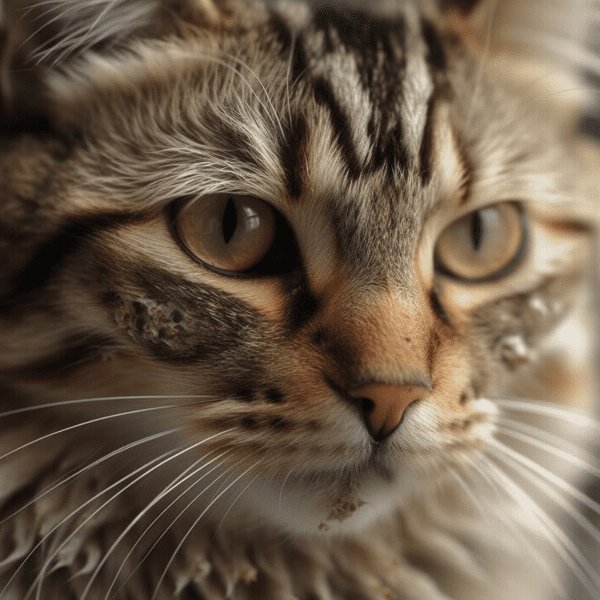
Diagnosis of Neurological FIP
Diagnosing neurological Feline Infectious Peritonitis (FIP) can be challenging, as the symptoms can be similar to those of other neurological diseases. A thorough physical examination, including neurological evaluation, is typically performed to assess the cat’s symptoms.
Neurological Examination
During the neurological examination, the veterinarian will evaluate the cat’s reflexes, muscle tone, and coordination, as well as their ability to sense stimuli such as touch and pain. The veterinarian may also perform more specialized tests, such as assessing the cat’s vision and hearing or performing a spinal tap to analyze cerebrospinal fluid.
Diagnostic Tests
Diagnostic tests are an important part of diagnosing neurological FIP, as there is no single definitive test for the disease. A combination of tests may be used to help diagnose the condition, including:
- Blood work: blood tests can help evaluate the cat’s overall health and rule out other diseases that may cause similar symptoms
- Imaging: imaging tests such as X-rays, ultrasound, or MRI may be used to evaluate the brain and spinal cord for signs of inflammation or damage
- Cerebrospinal fluid analysis: a sample of cerebrospinal fluid may be collected via a spinal tap and analyzed for signs of inflammation or infection
- PCR testing: Polymerase Chain Reaction (PCR) testing may be used to detect the presence of the feline coronavirus in samples of blood or other bodily fluids
Differential Diagnosis
Diagnosing neurological FIP requires ruling out other neurological diseases that may present with similar symptoms. Some of the differential diagnoses for neurological FIP include:
- Toxoplasmosis
- Cryptococcosis
- Feline infectious encephalitis
- Brain tumors
- Trauma or injury to the brain or spinal cord
Prognosis and Management
The prognosis for cats with neurological FIP is generally poor, with most cats experiencing a progressive decline in neurological function over time. Management of the disease is largely supportive and focused on managing the cat’s symptoms and improving their quality of life. Treatment options may include medications to manage symptoms, nutritional support, and fluid therapy.
In summary, diagnosing neurological FIP requires a thorough physical examination and diagnostic testing, as there is no single definitive test for the disease. Differential diagnosis is important to rule out other neurological diseases that may present with similar symptoms. The prognosis for cats with neurological FIP is generally poor, and management is focused on supportive care and improving the cat’s quality of life.
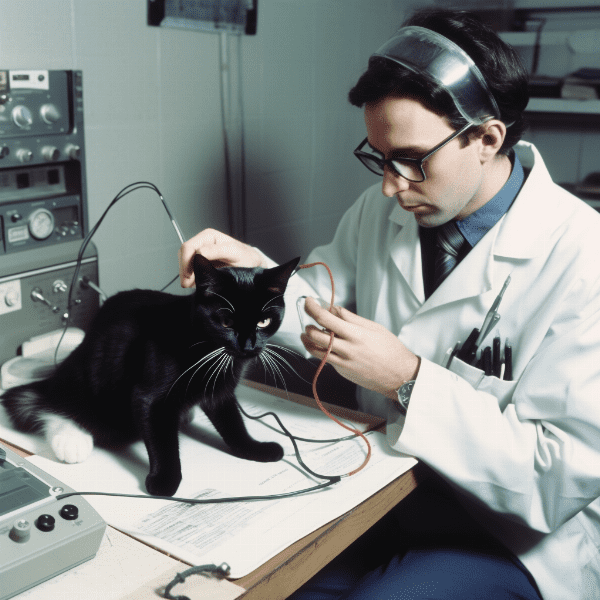
Treatment Options for Neurological FIP
Medications
Medications may be used to manage specific symptoms of neurological FIP, such as seizures or inflammation. Some common medications used to treat neurological FIP include:
- Corticosteroids: anti-inflammatory drugs that can help reduce inflammation in the brain and spinal cord
- Anti-seizure medications: drugs that can help manage seizures associated with neurological FIP
- Pain medications: drugs that can help manage pain associated with the disease
Fluid Therapy
Fluid therapy may be necessary to help manage dehydration or electrolyte imbalances associated with neurological FIP. Intravenous fluids or subcutaneous fluids may be used to help support the cat’s hydration and overall health.
Immunosuppressive Therapy
In some cases, veterinarians may recommend immunosuppressive therapy to help manage the symptoms of neurological FIP. This may include drugs such as cyclosporine or interferon, which can help suppress the immune system and reduce inflammation in the brain and spinal cord.
Prognosis and Long-term Management
Long-term management of neurological FIP is focused on supportive care and managing the cat’s symptoms. Regular check-ups with a veterinarian can help monitor the cat’s condition and adjust treatment as needed. In some cases, hospice care may be necessary to help manage the cat’s symptoms and ensure they are comfortable.
In summary, treatment options for neurological FIP are largely supportive and focused on managing the cat’s symptoms and improving their quality of life. Medications, nutritional support, fluid therapy, and immunosuppressive therapy may be used to help manage the disease. The prognosis for cats with neurological FIP is generally poor, and long-term management is focused on supportive care and managing the cat’s symptoms.
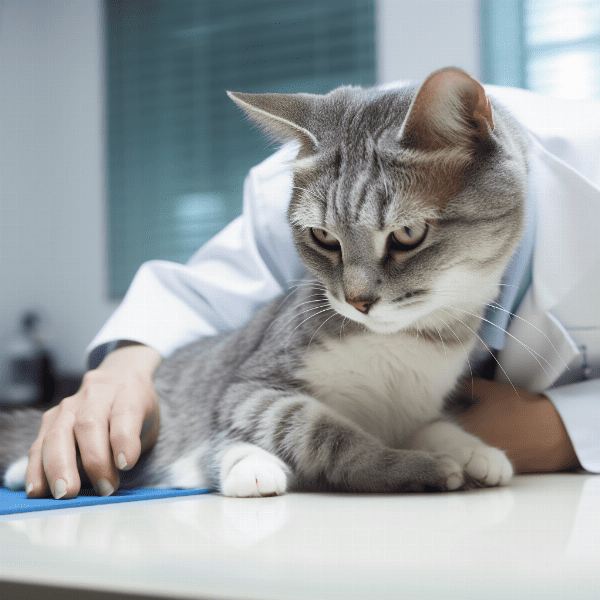
Supportive Care for Cats with Neurological FIP
Supportive care is an essential part of managing neurological Feline Infectious Peritonitis (FIP), as there is currently no cure for the disease. The goal of supportive care is to manage the cat’s symptoms and improve their quality of life.
Pain Management
Neurological FIP can cause a range of symptoms, including pain and discomfort. Pain management is an important part of supportive care for cats with neurological FIP. This may include the use of pain medications, such as nonsteroidal anti-inflammatory drugs (NSAIDs) or opioids.
Nutritional Support
Cats with neurological FIP may experience loss of appetite and weight loss, which can lead to malnutrition and other health problems. Nutritional support is an important part of managing the disease and ensuring the cat receives adequate nutrition. This may include the use of specialized diets or feeding tubes.
Hydration and Fluid Therapy
Dehydration is a common problem in cats with neurological FIP, and can lead to a range of health issues. Hydration and fluid therapy are important aspects of supportive care, and may include the use of intravenous fluids or subcutaneous fluids to support the cat’s hydration and overall health.
Environmental Modification
Cats with neurological FIP may require modifications to their environment to help manage their symptoms and improve their quality of life. This may include providing comfortable bedding, modifying their litter box, or creating a quiet and stress-free environment.
Regular Check-Ups
Regular check-ups with a veterinarian are an important part of supportive care for cats with neurological FIP. These check-ups can help monitor the cat’s condition, adjust treatment as needed, and ensure the cat is receiving the best possible care.
In summary, supportive care is an essential part of managing neurological FIP in cats. Pain management, nutritional support, hydration and fluid therapy, environmental modification, and hospice care may all be necessary to help manage the cat’s symptoms and improve their quality of life. Regular check-ups with a veterinarian can help ensure the cat is receiving the best possible care.
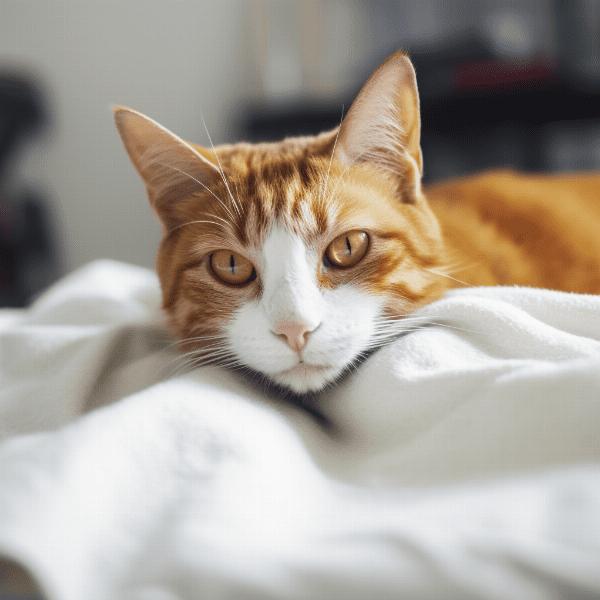
Prognosis and Long-term Management of Neurological FIP
The prognosis for cats with neurological Feline Infectious Peritonitis (FIP) is generally poor, with most cats experiencing a progressive decline in neurological function over time. However, the severity and progression of the disease can vary depending on the type of neurological FIP and the individual cat’s response to treatment.
Prognosis
The prognosis for cats with neurological FIP is generally poor due to the progressive nature of the disease. Most cats with the disease will experience a decline in neurological function over time, with some experiencing seizures, blindness, or paralysis. In some cases, the disease can progress rapidly and result in death within a few months of diagnosis.
Long-term Management
Long-term management of neurological FIP is focused on supportive care and managing the cat’s symptoms. This may include the use of medications, nutritional support, fluid therapy, and environmental modification. Regular check-ups with a veterinarian are also important to monitor the cat’s condition and adjust treatment as needed.
In some cases, hospice care may be necessary to help manage the cat’s symptoms and ensure they are comfortable. This may include the use of palliative medications, such as pain relievers or anti-anxiety medications, to help manage the cat’s symptoms and improve their quality of life.
Quality of Life
Maintaining a good quality of life for the cat is an important part of long-term management of neurological FIP. This may include providing a comfortable and stress-free environment, managing pain and discomfort, and ensuring the cat receives adequate nutrition and hydration.
Owners of cats with neurological FIP may also need to consider the ethical considerations surrounding the long-term management of the disease, and whether the cat’s quality of life is being maintained.
In summary, the prognosis for cats with neurological FIP is generally poor, with most cats experiencing a progressive decline in neurological function over time. Long-term management is focused on supportive care and managing the cat’s symptoms, including the use of medications, nutritional support, fluid therapy, and environmental modification. Maintaining a good quality of life for the cat is an important consideration, and owners may need to consider ethical considerations surrounding the long-term management of the disease.

Prevention of Neurological FIP
Preventing Feline Infectious Peritonitis (FIP), including the neurological form, can be challenging as the disease is caused by a mutated strain of the feline coronavirus. However, there are steps that cat owners can take to reduce their cat’s risk of contracting the disease.
Vaccination
Currently, there is no vaccine available specifically for FIP. However, vaccination against the feline coronavirus can help reduce the cat’s risk of developing the disease. The vaccine is not 100% effective and may not prevent all cases of FIP, but it can help reduce the severity of the disease and improve the cat’s chances of recovery.
Reducing Exposure to the Feline Coronavirus
Reducing exposure to the feline coronavirus can help reduce a cat’s risk of developing FIP. This may include measures such as:
- Keeping cats indoors to reduce exposure to other cats who may be carriers of the virus
- Regularly disinfecting litter boxes, food bowls, and other surfaces to reduce the spread of the virus
- Separating cats who are sick or have recently been exposed to the virus from healthy cats
Managing Stress and Boosting Immune Function
Stress can weaken the immune system and increase the risk of viral infections, including FIP. Managing stress and boosting immune function can help reduce the cat’s risk of developing the disease. This may include measures such as:
- Providing a comfortable and stress-free environment for the cat
- Encouraging play and exercise to promote physical and mental health
- Providing a balanced and nutritious diet to support immune function
Screening for Feline Coronavirus
Screening cats for the feline coronavirus can help identify carriers of the virus and reduce the risk of transmission to other cats. However, screening alone is not a reliable way to predict whether a cat will develop FIP.
In summary, preventing neurological Feline Infectious Peritonitis (FIP) can be challenging as the disease is caused by a mutated strain of the feline coronavirus. Vaccination, reducing exposure to the virus, managing stress and boosting immune function, and screening for the virus can all help reduce a cat’s risk of developing FIP.

Research and Future Directions for Neurological FIP
Research into neurological Feline Infectious Peritonitis (FIP) is ongoing, and there are several promising areas of study that may lead to new treatments or prevention strategies for the disease.
Understanding the Pathogenesis of FIP
One area of research is focused on understanding the pathogenesis of FIP, including the mechanisms by which the feline coronavirus mutates into the disease-causing form. This knowledge could help identify new targets for treatment and prevention strategies.
Development of New Treatments
Researchers are also exploring new treatments for neurological FIP, including the use of antiviral drugs and immunomodulatory therapies. These treatments aim to reduce the severity of the disease and improve the cat’s chances of recovery.
Gene Therapy
Another area of research is focused on the use of gene therapy to treat or prevent FIP. Gene therapy involves altering the cat’s DNA to improve their immune response to the virus or to prevent the virus from mutating into the disease-causing form.
Vaccine Development
Vaccine development is another promising area of research, with several new vaccines currently in development. These vaccines aim to provide more comprehensive protection against the feline coronavirus, reducing the cat’s risk of developing FIP.
Collaboration and Funding
Collaboration between researchers, veterinarians, and cat owners is essential to advancing research into neurological FIP. Funding for research is also crucial to support ongoing studies and develop new treatments and prevention strategies.
In summary, ongoing research into neurological FIP is focused on understanding the pathogenesis of the disease, developing new treatments and prevention strategies, and advancing vaccine development. Collaboration and funding are essential to support these efforts and improve outcomes for cats with neurological FIP.

Resources and Support for Owners of Cats with Neurological FIP
Caring for a cat with neurological Feline Infectious Peritonitis (FIP) can be challenging, and owners may need additional resources and support to help manage the disease.
Veterinary Care
Regular veterinary care is essential for cats with neurological FIP. A veterinarian can monitor the cat’s condition, adjust treatment as needed, and provide guidance and support for managing the disease.
Support Groups and Online Communities
Joining a support group or online community for owners of cats with neurological FIP can provide valuable emotional support and practical advice for managing the disease. These groups can also provide a forum for sharing experiences and connecting with others who are going through similar challenges.
Educational Resources
Educational resources, such as websites and books, can provide valuable information about the disease and its management. These resources can help owners understand the disease, its symptoms, and its treatment options.
Hospice and Palliative Care
In some cases, hospice and palliative care may be necessary to help manage the cat’s symptoms and ensure they are comfortable. Hospice and palliative care providers can provide specialized care and support for cats with neurological FIP.
Ethical Considerations
Owners of cats with neurological FIP may need to consider ethical considerations surrounding the long-term management of the disease, including end-of-life care and euthanasia. Discussing these considerations with a veterinarian or support group can help owners make informed decisions that are in the best interests of the cat.
In summary, caring for a cat with neurological FIP can be challenging, and owners may need additional resources and support to help manage the disease. Veterinary care, support groups and online communities, educational resources, hospice and palliative care, and ethical considerations are all important considerations for owners of cats with neurological FIP.
